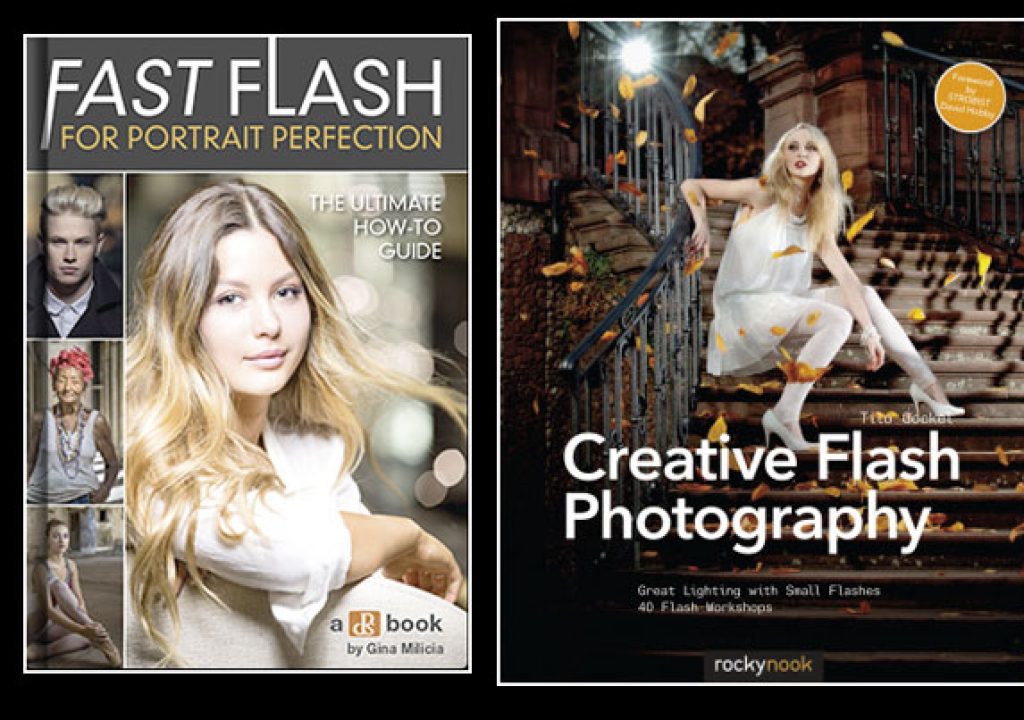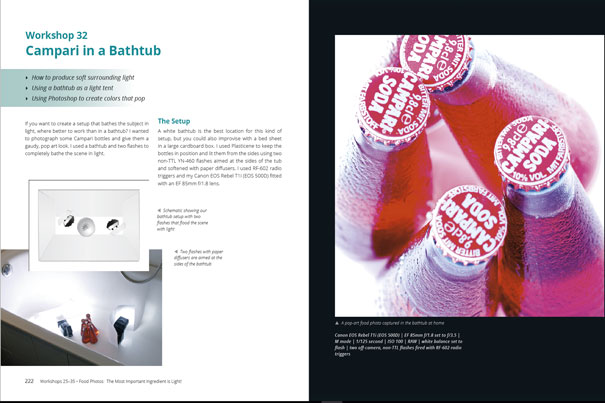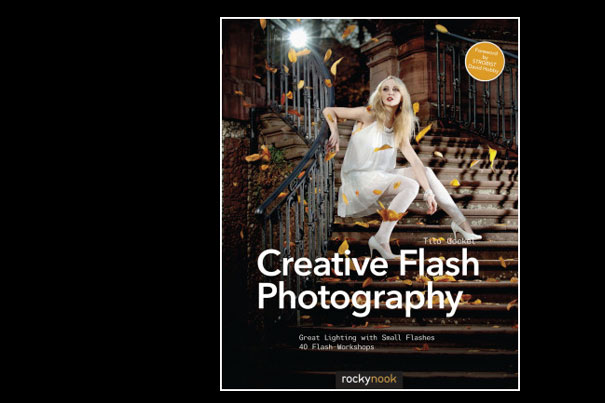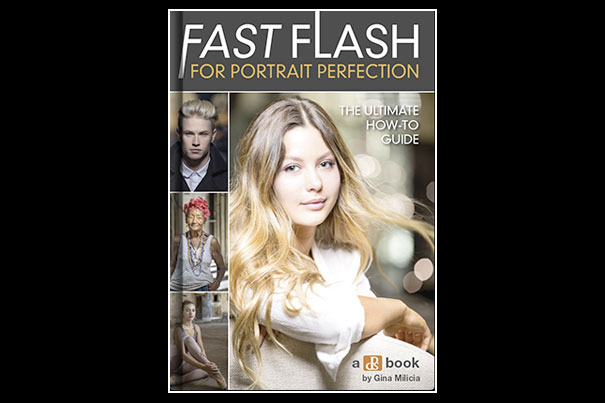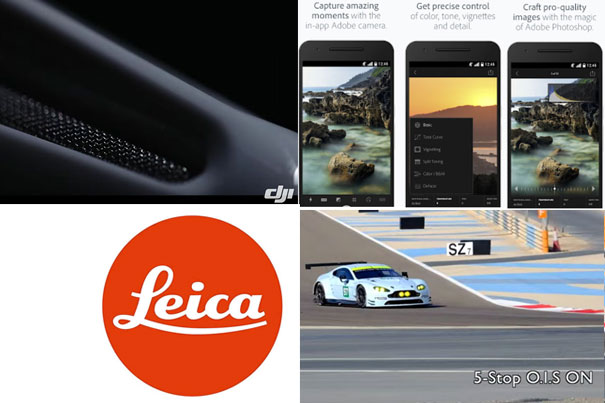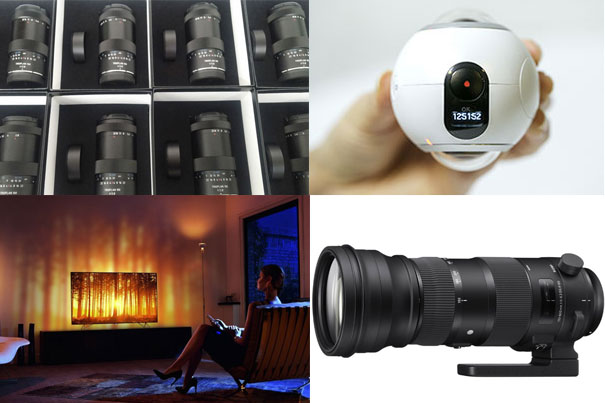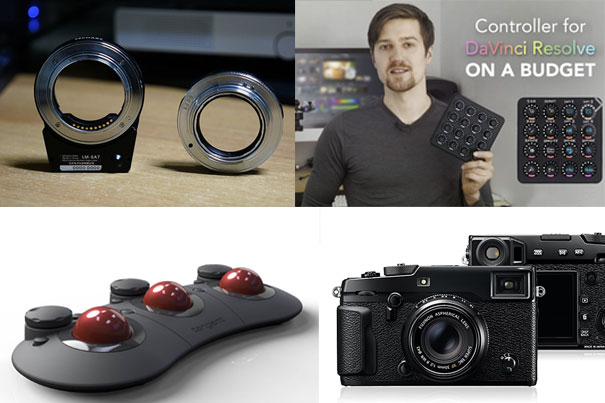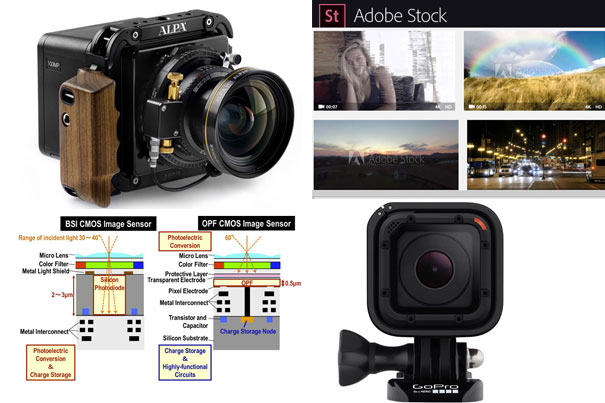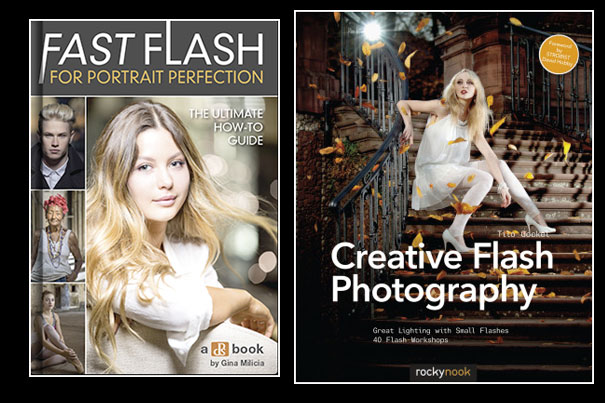
When recently I wrote here about the eBook One Flash! Great Photography with Just One Light, from Tilo Gockel, I also wrote that “with flash it becomes even more obvious that recipes are, many times, adapted to each author’s flavour and experiences, meaning that it does not matter how many books you read about the subject, there will always be something or some recipes that you’ll find offer a new take in a “dish” you thought you already knew”.
I continue to pursue the same idea in this text, which explores two book titles that reveal how different photographers tackle, in similar and diverse ways, the same subjects. It’s really a voyage of discovery, I believe, and one from which different photographers will come with different notions, ideas and goals.
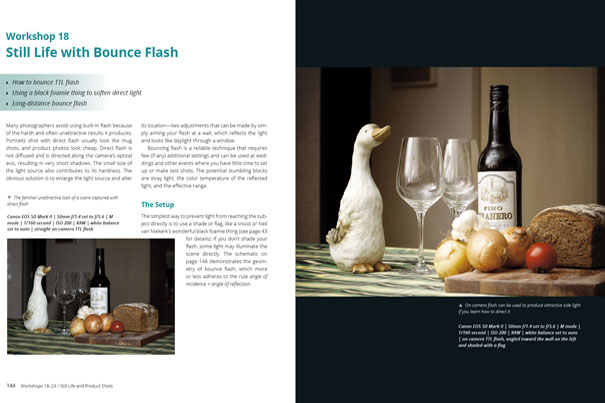
One of the eBooks/books on this article I have already mentioned before. It’s Creative Flash Photography, Great Lighting with Small Flashes: 40 Flash Workshops, also from Tilo Gockel, published by Rocky Nook in 2014, a compendium of solutions using single or multiple light setups. Much of the information present on the One Flash! book is also here, but the author expands to other areas and more complex setups, presented as a series of workshops that readers can use as a base for their own experiences or work. It is like having a cheat sheet you can always go back to when faced with similar subjects. Or you can simply adapt a technique to something completely different, which is part of the fun too!
Creative Flash Photography, Great Lighting with Small Flashes: 40 Flash Workshops is a book with 304 pages filled with information both on gear to use – and a lot about what the author uses and why – and general tips about photography with artificial light. There are notes about creating light diagrams, how to calculate exposures, the cons and pros of JPEG and RAW, how to use mirror lockup and Live View and many other things that will help photographers to understand this world of light. Then, there are the workshops, which cover everything from food to high-speed flash, portrait and fashion, macro, still life and product shots.
Each series of workshops covers multiple subjects, from photos for catalogues to photographing an acoustic guitar, from coins in a dark field to flavoured gins à la David Hobby, a reference to the author of the reference website Strobist, who signs the Foreword in this book.
Creative Flash Photography Great Lighting with Small Flashes: 40 Flash Workshops feels a bit like going into a studio for a day’s lesson… a workshop. The way it is written puts one at ease, both wanting to read about the different solutions and the urge to go and try them. I think that’s one of the great aspects of some of these books: they make you want to do things, and that’s, no doubt, the best way to learn. Especially when you’ve guidance to help you avoid some of the pitfalls of working with flash.
Tilo Gockel makes it sound fun – believe me, it is entertaining reading – and even if some setups are in a league above what many users will be able to try, they kind of help those that want to set goals. Throughout this book one discovers what is needed to create some of the magic… and sometimes also ways to achieve it in simpler and cheaper ways. So, the investment in this guide is, probably, a sound way to spare you from spending money erratically in the future.
I’ve found that you’re always learning new things, when you read different authors. Although you may know much of the theory and practice, sometimes just the way an author explains it reveals a new perspective that makes it more interesting, easy to understand or exciting to follow. Some times you’ll agree with the author, other times not, I’ve found. But books give you the chance to compare, sometimes even try the approach suggested by each author, and then, sometimes, find your own “recipe”, which can be a mix of the methods used by each author.
That’s the reason why I tend to be curious about what each book author and photographer can offer. So, the new new eBook from photographer Gina Milicia published by dPS, Fast Flash for Portrait Perfection, which aims to make the use of flash simple, was on my reading list for these days.
The author of a series of Portaits’ eBooks ((Making the Shot, Striking the Pose, Lighting the Shot and After the Shot)) now dedicates a whole eBook to share all her best flash lighting secrets, tips and techniques. Through 125 pages, readers are served not only the author’s options and preferences in terms of gear but also with technical information about different types of lighting. Gina Milicia brings to the table her experience from 25 years photographing people, and shares it in a practical, easy-to-understand way, also pointing out that to achieve studio-quality results don’t necessarily require high-end gear. And to confirm that, many of the examples in the eBook were shot using a budget lighting kit!
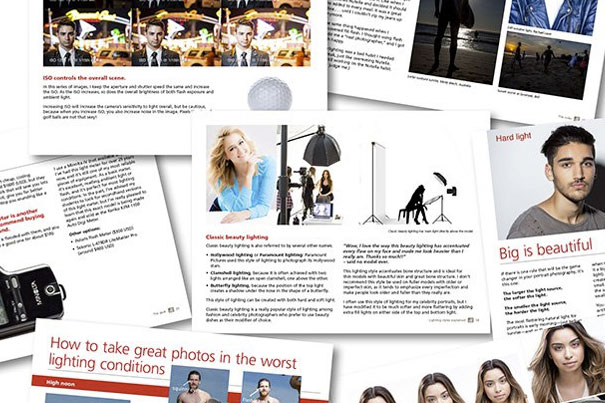
Looking through this eBook you’ll find that Gina Milicia gets good results with simple solutions, things you’ll want to be able to achieve on many of the situations when you need or want to use flash. The pictures appeal to you, and the writing style, simple and to the point, will move you on the direction of the desired goal. It is a good eBook, that will take you from The Rules to The Recipes, moving through different chapters that cover things like: The Gear, Lighting Styles or The Caca Zone, closing with 9 different situations and ways to solve them.
Having read Gina Milicia’s previous eBooks, some of the material in Fast Flash for Portrait Perfection is not new to me, but rereading some notes always works as a refresher course. Browsing the pages, I always find that it does not matter how many books on flash photography you’ve read, there will always be some surprises on a new one. Even the same authors may have changed something in their workflow, learned through their own trial and error or found elsewhere, that you’ll discover reading their books. After all, Photography is an ongoing process, when it comes to education, and there seems to be, always, something new to learn. I guess that’s part of the magic of the craft, really.
Having said – written – this, it is your turn to decide which of the books you feel attracts you most. Going through some of the information on the different websites offering them may help you to make a decision. Whatever you choose, good reading!

Filmtools
Filmmakers go-to destination for pre-production, production & post production equipment!
Shop Now